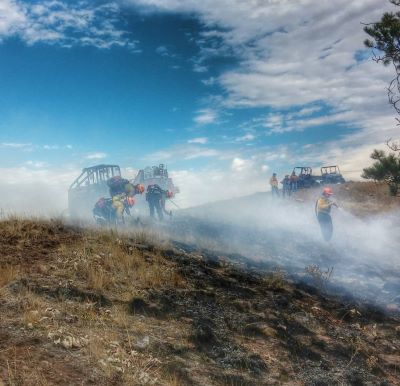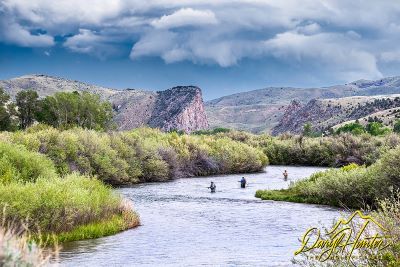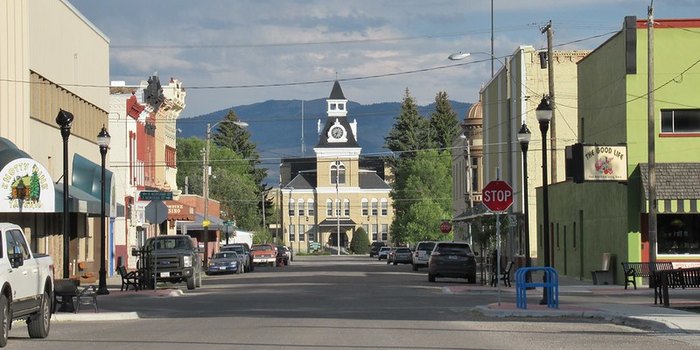How to Become a Wildland Firefighter
If you have a passion for the outdoors, are willing to learn and be part of a team, then you should apply to be a wildland firefighter for the DNRC. Applications for seasonal wildland firefighting positions are now closed for the season. Positions include firefighter, engine boss, helicopter crew member, aerial observer, fuel truck driver, initial attack dispatcher, and forest improvement technician. For more information on what it takes to be a wildland firefighter, click through the links below and SAVE THE DATE to apply come JANUARY 2026.
Application Phase
To apply for a seasonal wildland firefighter position with the DNRC, candidates must submit their applications online through the State of Montana website. To view open positions, visit statecareers.mt.gov, type "firefighter" in the "Keyword" box and click the search button. Applications are accepted each year beginning in January, 2025. Early applications are strongly recommended. Required application materials include a resume, an online application, and a cover letter that addresses specific questions related to outdoor experience, physical fitness, teamwork, and relevant skills. Applications will be reviewed on a continual basis starting in mid-February, 2025.
Hiring Phase
Interviews are typically held between mid-March through Mid-April. Interviews are conducted in person at the Unit (office) location. If successful in the interview, the candidate will be offered the position conditioned upon successfully passing the arduous pack test. This test is comprised of a 3-mile hike with 45-pound pack in 45 minutes which is typically completed the first or second week in May.
Training Phase
DNRC has developed a comprehensive training program that supports all fire management activities and delivers training courses to its own permanent and seasonal firefighting personnel. In addition to providing training, DNRC also maintains records of firefighters’ training, experience, qualifications, and certifications to help ensure that appropriately trained personnel are available to meet Montana’s wildfire management staffing needs.
DNRC will host a mandatory statewide WILDLAND FIRE ACADEMY in Dillon, MT from May 28 - June 6. Additionally, each Unit will provide supplemental training and field days. Continued training will take place throughout the summer.
What qualifications do I need to become a firefighter?
All required training needed will be provided to successful candidates onces they are hired. Qualifications vary depending on whether you are coming in as a wildland firefighter 2 or 1, helitack crew member, initial attack dispatcher, engine boss, etc.
What should I write in my cover letter?
Your cover letter should focus on detailing relevant experiences, such as outdoor or physically demanding work, equipment use (such as chainsaws, axes or mechanical repair) and teamwork skills, and motivation for applying. One page is sufficient so long as you answer the questions listed in the job posting.
Effective July 2024, all DNRC firefighters and staff will receive a 10 percent increase to their hourly pay when supporting authorized emergency work. Authorized emergency work under the new pay increase includes response to wildland fire incidents and other all-hazard incidents.
What locations (units) provide FREE housing?
Helena Unit, Dillon Unit, Lincoln Unit, Olney Station, Clearwater Unit, Garrison Station, Boorman Station of Kalispell Unit, Stillwater Unit, Swan Unit and Libby Units all have bunkhouses on location that are free for seasonal employees on a first come, first served basis.
What kind of hours do firefighters work?
A typical workday will vary depending on the season and fire activity, scheduled training, project work, assignments, etc. Work will also vary based upon Units across the state.
Do firefighters receive overtime pay?
Yes. Employees receive overtime pay for hours worked in excess of 40 in a workweek at one and one-half times their regular rate of pay. This includes the 10% differential pay increase when on a fire and/or all-hazard incident.
When does the season begin and how long does a typical season last?
Employment is generally 3-4 months with work beginning as early as May and ending in early September with the potential to begin as early as April and run as late as October depending on fire activity.
How and where can I gain experience before the season begins?
Joining a volunteer fire department is a good way to gain experience if candidates are looking into getting into this field of work. Additionally, there is an opportunity to take some online training courses through the National Wildfire Coordinating Group.
What type of gear do I need to purchase and what will the DNRC prove for me?
The DNRC will provide all the necessary personal protective equipment though each firefighter will be responsible for purchasing their own fire boots. Wildland firefighting personnel are required to wear boots that are at least 8 inches high from the heel to the top with a lace-up design and lug soles that are melt-resistant, adhering to specific requirements for durability and safety in rugged conditions.
A Preparedness Guide for Wildland Firefighters and Their Families - National Wildfire Coordinating Group


|

|

|

|

|

|

Libby Unit Firefighters on Initial Attack 2023 |

|

|

|

|

|

|

|

|

|
|

|

|

|

|

|

|

|

|

|

|

|

|

|

|

|

|

|

|

|

|

Helicopter performing water bucket drops on fire |

|